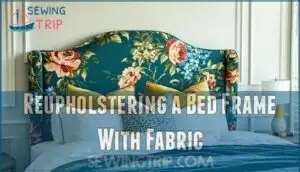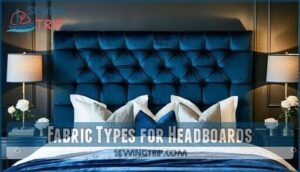This site is supported by our readers. We may earn a commission, at no cost to you, if you purchase through links.
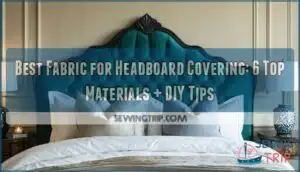
Cotton blends offer durability and easy maintenance, making them perfect for everyday use.
Velvet creates instant luxury but requires more careful cleaning.
Performance fabrics like polyester resist stains – ideal for families with kids or pets.
Linen brings relaxed texture that’s trending in modern bedrooms.
Consider your room’s humidity levels too; natural fibers breathe better but synthetic options handle moisture without fading.
Your headboard’s existing structure also matters – stretchy knits work well over curved surfaces while crisp cottons suit geometric designs.
Smart fabric selection transforms any bedroom into your perfect retreat with the right choice of fabric, considering factors like durability, maintenance, and style, ultimately leading to a cozy and inviting space that reflects your personal taste and lifestyle preferences.
Table Of Contents
- Key Takeaways
- 6 Best Fabrics for Headboard Covering
- 1. Turquoise Solid Poly Cotton Fabric by the Yard
- 2. Natural Linen Fabric Plain Solid Color Tablecloth Garments Craft Accessories
- 3. Upholstery Fabric Polyester Blend Fossil Pattern
- 4. Chenille Royal Fabric by Yard
- 5. Majesty Velvet Fabric Blush Yard
- 6. Soft Faux Leather Fabric Sheets for Upholstery and Crafts
- Benefits of Fabric Headboard Coverings
- How to Measure and Calculate Fabric Needed
- DIY Instructions for Upholstered Headboard
- Reupholstering a Bed Frame With Fabric
- Fabric Types for Headboards
- Frequently Asked Questions (FAQs)
- Conclusion
Key Takeaways
- Match fabric to your lifestyle – You’ll want cotton blends for easy maintenance with kids and pets, velvet for luxury (but it needs gentle care), or performance polyester for maximum stain resistance.
- Consider your headboard’s shape – You’ll need stretchy knits like chenille for curved surfaces, while crisp cottons work best on geometric or flat headboard designs.
- Prioritize durability for daily use – You’ll get better value by choosing upholstery-grade fabrics rated above 15,000 double rubs, since headboards endure frequent contact and leaning.
- Factor in room conditions – You’ll achieve better results with natural fibers like linen in humid rooms for breathability, while synthetic options handle moisture without fading or damage.
6 Best Fabrics for Headboard Covering
Choosing the right fabric for your headboard can transform your bedroom’s entire look while ensuring durability and comfort.
You’ll want to keep in mind factors like maintenance requirements, texture preferences, and how well each material handles daily wear when making your selection.
1. Turquoise Solid Poly Cotton Fabric by the Yard
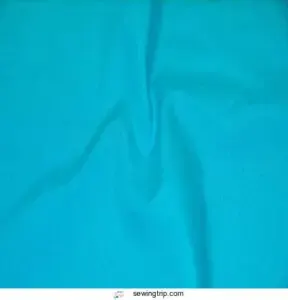
This poly-cotton blend delivers impressive fabric durability while offering excellent color options for your headboard project.
Poly-cotton blends give you the perfect marriage of comfort and durability for any headboard project.
The lightweight material blends create smooth texture that’s perfect for beginners tackling upholstery work.
You’ll find this durable headboard fabric easy to handle during installation, and its cotton quality guarantees long-lasting results.
This best fabric for headboard covering combines affordability with performance, making it ideal for budget-conscious DIY enthusiasts seeking reliable headboard fabric types.
2. Natural Linen Fabric Plain Solid Color Tablecloth Garments Craft Accessories
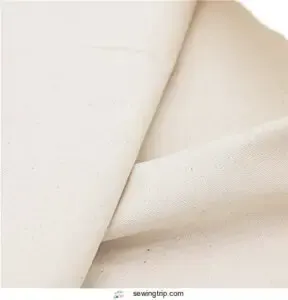
Natural linen fabric offers headboard makers a premium choice that’s both beautiful and functional.
Linen brings timeless elegance and natural beauty to any bedroom sanctuary.
This durable headboard fabric guide reveals why choosers prefer natural textiles for their projects.
The soft, breathable weave makes it perfect for garment making and fabric crafts beyond tablecloth ideas.
You’ll find the tight construction handles daily wear while maintaining its sophisticated appearance.
Though some buyers report sizing inconsistencies, the quality justifies choosing headboard fabric that develops character over time.
This linen headboard fabric creates an organic, timeless look that complements any bedroom style perfectly.
3. Upholstery Fabric Polyester Blend Fossil Pattern
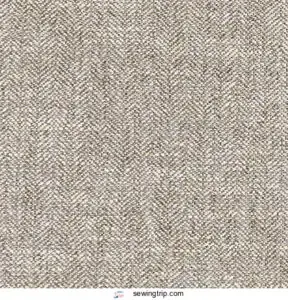
While natural linen offers a timeless aesthetic, you’ll find that upholstery fabric polyester blends deliver superior durability for high-use headboard projects.
This fossil-patterned polyester blend combines 95% polyester with 5% acrylic, creating headboard fabric that won’t fade or wear easily.
Polyester benefits shine through in its stain resistance and wrinkle-free maintenance.
The fossil designs add sophisticated texture without overwhelming your bedroom’s color scheme.
Blend materials like this work exceptionally well for DIY upholstery tips because they’re forgiving during installation.
You’ll appreciate how this fabric patterns complement both modern and traditional décor styles.
The neutral earth tones in the fossil pattern create visual depth while remaining versatile enough to pair with solid accent pieces.
This upholstery fabric proves that fabric durability doesn’t require sacrificing style—you get both professional-looking results and long-lasting performance.
4. Chenille Royal Fabric by Yard
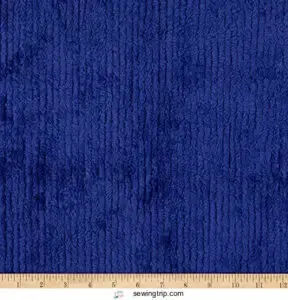
Royal blue chenille fabric transforms your headboard into a touchable masterpiece with its signature velvety texture.
This lightweight upholstery fabric offers excellent fabric durability while maintaining the soft upholstery feel you crave.
When calculating yardage calculation, chenille’s wide width maximizes coverage efficiency for your fabric selection needs.
- Silky-smooth chenille fabric that begs to be touched every morning
- Royal texture brings regal elegance to your bedroom sanctuary
- Effortless fabric durability withstands daily use without compromising softness
- Budget-friendly yardage stretches your decorating dollars further
- Machine-washable convenience keeps your headboard fabric looking fresh
5. Majesty Velvet Fabric Blush Yard
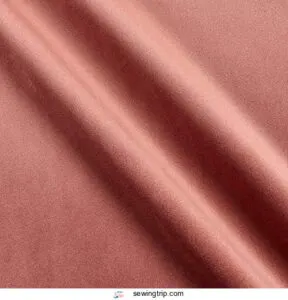
Blush velvet transforms your headboard into a romantic masterpiece that radiates sophistication.
This luxurious headboard fabric features a cloud-like softness with an elegant sheen that catches light beautifully.
The dusty blush colors complement both modern and traditional bedroom aesthetics perfectly.
Made from pre-shrunk polyester, this velvet headboard fabric offers excellent fabric durability while remaining surprisingly easy to maintain.
Velvet care requires gentle machine washing in cold water and low-heat tumble drying.
When planning your headboard upholstery project, remember that velvet’s plush pile adds visual depth and texture.
Calculate extra yardage for pattern matching and fabric waste.
This medium-weight velvet provides the perfect balance between luxury headboard fabric appeal and practical functionality for your headboard fabric ideas.
6. Soft Faux Leather Fabric Sheets for Upholstery and Crafts
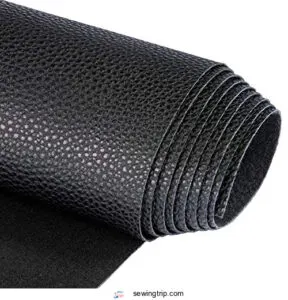
Soft Faux Leather Fabric Sheets deliver the sophisticated appeal of genuine leather without the hefty price tag.
This versatile upholstery fabric transforms your headboard into a sleek focal point that’s surprisingly budget-friendly. The synthetic material resists stains and moisture while maintaining flexibility for easy installation.
- Waterproof surface protects against spills and humidity
- Multiple color options match any bedroom aesthetic
- Easy-clean maintenance requires only damp cloth wiping
- Durable construction withstands daily wear and friction
Perfect for craft materials and leather alternatives, this fabric for headboard projects offers professional results.
Benefits of Fabric Headboard Coverings
Fabric headboard coverings transform your bedroom from basic to boutique-level in just one weekend project.
You’ll enjoy enhanced comfort, endless style options, and the satisfaction of creating a custom focal point that perfectly matches your personal aesthetic, with endless style options.
Choosing Upholstery Fabrics
Three factors matter most when selecting upholstery fabric for your headboard project.
First, consider fabric durability—polyester blends withstand over 15,000 cycles, while velvet exceeds 50,000 double rubs.
Second, evaluate texture options and pattern choices that match your bedroom’s aesthetic.
Finally, balance material costs with quality needs.
| Fabric Type | Durability Rating | Price Range |
|---|---|---|
| Polyester Blend | 15,000+ cycles | $10-$20/yard |
| Velvet | 50,000+ rubs | $25-$50/yard |
| Linen | Medium wear | $20-$40/yard |
When choosing headboard fabric, prioritize stain resistant materials if you have kids or pets.
Color selection affects room ambiance, while durable material guarantees long-lasting results.
Professional upholsterers recommend testing fabric samples against your wall colors before purchasing full yardage for the best results.
Considering fabric selection factors is vital to guarantee the chosen fabric meets your needs and preferences.
– Headboard Material Options
How do you choose the perfect material for your headboard project? Consider these key factors when evaluating fabric selection and material durability options:
- Durability and Performance – Upholstery choices like polyester blends resist fading and wrinkles better than natural fibers
- Maintenance Requirements – Stain resistant headboard fabrics save time and preserve appearance longer
- Style and Texture – Leather headboard fabric adds sophistication while velvet creates luxurious visual depth
- Budget Considerations – Cotton offers affordability without sacrificing quality for most headboard frames
Different fabric types serve specific needs. Upholstery fabric designed for furniture withstands daily wear better than lightweight materials. Wood finishes should complement your chosen textile – darker headboard fabric pairs beautifully with lighter wood tones.
Consider room lighting when selecting colors, as natural light affects how materials appear throughout the day. When selecting a headboard fabric, understanding headboard fabric options is essential for making an informed decision.
– DIY Upholstered Headboard Tips
Creating your own upholstered headboard requires strategic fabric selection and proper upholstery tools.
Choose durable DIY headboard fabric that complements your headboard designs while considering material costs. When shopping for upholstery fabric or headboard fabric online, prioritize quality over price.
Master fabric measurement techniques for accurate calculations. Essential DIY techniques include securing foam padding with industrial staples and pulling fabric taut during installation.
Professional-grade DIY upholstered headboard projects demand patience and precision for lasting results. The right choice of fabric is vital, considering factors like upholstery fabric durability and maintenance.
How to Measure and Calculate Fabric Needed
Getting accurate fabric measurement for your headboard project starts with precise measurements and smart calculations. You don’t want to run short halfway through your DIY adventure or waste money on excess material.
Here’s your step-by-step approach to headboard sizing and yardage calculation:
- Measure twice, buy once: Record your headboard’s width and height in inches, then add 6-8 inches to each dimension for wrapping and securing
- Calculate total fabric requirements: Multiply your adjusted width by height to get square inches needed
- Check fabric specifications: Standard upholstery fabric comes in 54-60 inch widths – this affects your cutting techniques
- Convert to yardage: Divide your total fabric calculation by the fabric width, then divide by 36 to get yards needed
Most upholstery fabrics work perfectly for headboards, but always round up your final number. Fabric measurement becomes second nature once you’ve done it a few times, and having extra material beats making emergency fabric store runs mid-project. Accurate body measurements, such as taking precise body measurements, are essential for sewing success, and similar attention to detail is necessary for measuring fabric.
DIY Instructions for Upholstered Headboard
Now that you’ve calculated your fabric requirements, it’s time to transform your materials into a stunning DIY headboard. Start by constructing your frame from lightweight wood or plywood, making it at least six inches wider than your bed for proper visual balance.
Wood preparation involves cutting your upholstery foam to match the frame’s exact dimensions. Apply spray adhesive to attach the foam smoothly, then layer batting over the top. Your fabric selection becomes vital here—upholstery fabric works best for durability.
Place the fabric face-down, center your padded headboard on top, and begin stapling techniques that guarantee professional results. Start stapling from each side’s center, working outward while pulling the fabric taut. This prevents wrinkles and creates even tension.
For corners, fold the fabric like you’re wrapping a gift, trimming excess material as needed. These upholstery tools and methods create headboard designs that rival store-bought options. Your fabric headboard will showcase your chosen headboard materials beautifully while providing lasting comfort.
To achieve a professional finish, consider following a DIY upholstery guide for detailed instructions.
Reupholstering a Bed Frame With Fabric
Transforming your tired bed frame with fresh fabric breathes new life into your bedroom sanctuary. Professional upholsterers charge between $350 and $800 for full reupholstery, but tackling this project yourself saves money while expressing your personal style.
Fabric Selection matters enormously—choose upholstery fabric rated above 15,000 double rubs for everyday bedroom use. Synthetic blends offer 40% better stain resistance than natural fibers, making them ideal for reupholstering bed frame projects.
Start by removing old fabric and staples, which typically takes one hour for queen frames.
Follow these essential Reupholstery Tips:
- Disassemble systematically – Label each piece for hassle-free reassembly later
- Stretch fabric evenly – Use your staple gun every 2-3 inches, working from center outward
- Layer contrasting Fabric Patterns** – Secure decorative top layer over base fabric for depth
Upholstery Tools like staple guns and upholstery tacks provide secure attachment without damaging frames. Nine out of ten DIY enthusiasts report satisfaction when following step-by-step guides, proving this rewarding project transforms any upholstered headboard into a personalized masterpiece. When selecting fabric, consider the importance of fabric options to guarantee durability and aesthetic appeal.
Fabric Types for Headboards
When you’re choosing headboard fabric, durability meets design in perfect harmony. Fabric selection starts with understanding your priorities—comfort, maintenance, or visual impact.
Natural fabrics like cotton offer breathability and softness, while linen brings sophisticated texture that improves with age. Synthetic fabrics such as polyester blends resist fading and maintain their appearance after thousands of use cycles.
Chenille provides plush comfort with excellent pilling resistance, making it ideal for headboard materials that need longevity. Upholstery fabric like velvet adds luxury with sound absorption benefits, reducing bedroom noise by up to 16%. Faux leather delivers modern aesthetics with 90% stain removal rates.
Smart textile choices consider your room’s sunlight exposure, since some materials fade faster than others. Upholstery tips include testing swatches first—colors can look dramatically different under your bedroom lighting.
Fabric durability varies substantially, so match your choice to how often you’ll lean against your headboard. Understanding the best headboard fabric options is vital for making an informed decision that balances style and practicality.
Frequently Asked Questions (FAQs)
What is the best fabric for a headboard?
You’ll find upholstery fabric works best for headboards.
Cotton offers durability and easy cleaning, while polyester resists stains perfectly.
Velvet adds luxury but needs gentle care, and linen provides breathable sophistication with natural appeal.
What material should I choose for my headboard?
Upholstery fabric works best for headboards since it’s specifically designed for furniture use.
Choose cotton for affordability and breathability, polyester blends for durability and stain resistance, or velvet for luxury—though it requires more maintenance.
How to choose a headboard?
Like selecting the perfect frame for a masterpiece, you’ll want to take into account size, style, and material that complement your bedroom’s aesthetic.
Measure your bed width, choose upholstered for comfort or wood for durability, and match your décor.
What are the different types of headboard fabrics?
You’ll encounter several fabric types for headboards, each with distinct characteristics.
Cotton offers breathability and softness but wrinkles easily.
Linen provides durability and texture while being more expensive.
Velvet adds luxury but collects dust and crushes.
Why should you choose a synthetic headboard?
You’ll love synthetic fabrics because they’re incredibly durable, resist stains and fading beautifully, and they’re budget-friendly compared to natural options like leather or linen.
Are fabric headboards hard to make?
Picture yourself threading a needle with ease—creating a fabric headboard isn’t much harder.
You’ll cut wood, add foam padding, stretch fabric tight, and staple it securely.
Basic tools and patience make this weekend project totally doable.
What is the best fabric for headboards?
Upholstery fabrics like cotton, linen, or polyester work best for headboards.
You’ll want something durable that won’t fade or stain easily.
Velvet adds luxury but attracts dust, while faux leather offers easy maintenance.
What are the disadvantages of fabric headboards?
Like delicate flowers that wilt under harsh sunlight, fabric headboards face several challenges.
You’ll deal with dust accumulation, staining risks, fading from UV exposure, difficult deep cleaning, potential allergen harboring, and wear from daily contact.
Why does no one use headboards anymore?
Actually, headboard popularity hasn’t disappeared — trends show they’re evolving rapidly.
Wooden headboards peaked at 95 in February 2025, while upholstered styles reached 81 in August
People want multifunctional designs now.
The latest designs often feature modern storage trends that combine style and functionality.
What material is used for bed headboards?
Headboards use various materials including upholstered fabrics like cotton, linen, polyester, velvet, and chenille.
You’ll also find leather, faux leather, vinyl, and wood options, each offering different durability, maintenance, and aesthetic benefits, with aesthetic being a key factor in the decision-making process.
Conclusion
Selecting the best fabric for headboard covering is like choosing the perfect outfit for your bedroom’s centerpiece.
You’ll want to balance style with practicality, considering factors like durability, maintenance requirements, and your room’s specific conditions.
Cotton blends deliver reliable performance for busy households, while velvet adds sophisticated elegance to formal spaces.
Performance fabrics handle family life’s challenges, and linen creates that coveted relaxed atmosphere.
Remember to match your fabric’s stretch properties to your headboard’s shape, and don’t forget proper measuring techniques for professional results.
- https://inmyownstyle.com/diy-upholstered-headboard.html
- https://www.thisoldhouse.com/furniture/21016437/how-to-upholster-a-headboard
- https://www.lowes.com/n/how-to/how-to-upholster-a-headboard
- https://www.theheadboardworkshop.co.uk/advice/best-fabrics-for-headboards/
- https://tackbandusa.com/articles/top-mistakes-to-avoid-when-upholstering-furniture/

